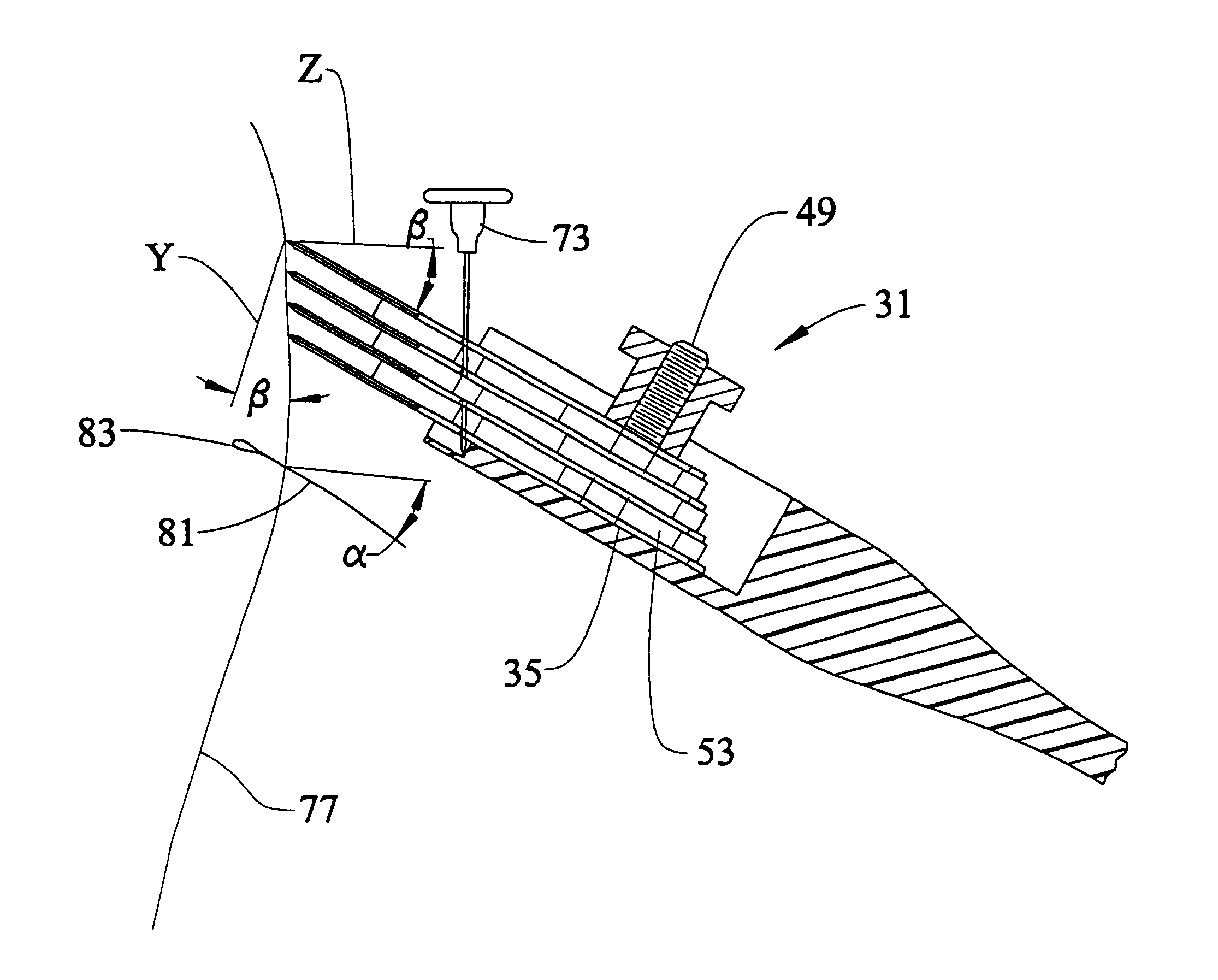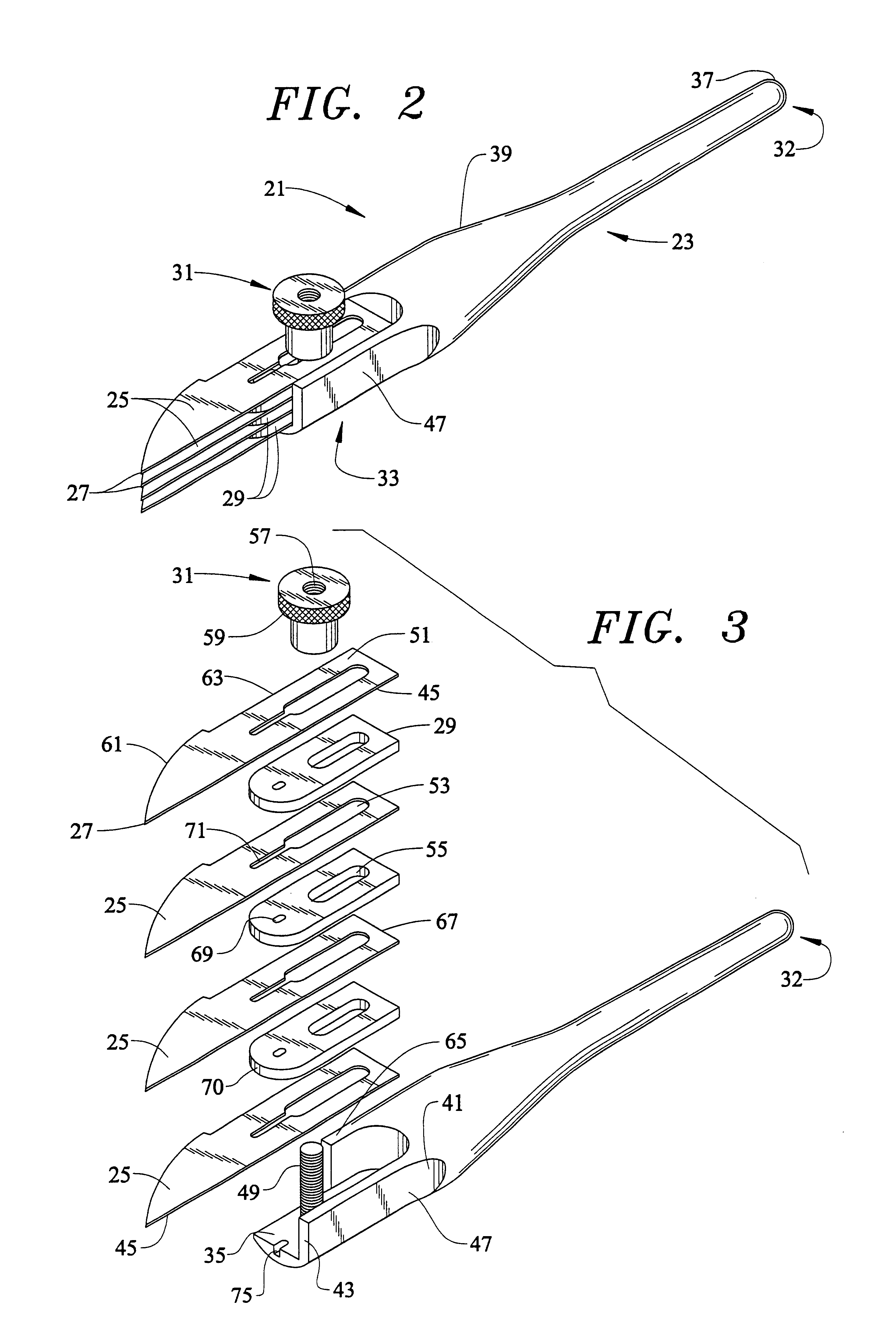Multiple bladed surgical knife and method of use
a multi-bladed, surgical knife technology, applied in the field of surgical knives, can solve the problems of inadvertent destruction of hair follicles located below the scalp, affecting the quality of surgical work,
- Summary
- Abstract
- Description
- Claims
- Application Information
AI Technical Summary
Benefits of technology
Problems solved by technology
Method used
Image
Examples
Embodiment Construction
[0042]FIGS. 2 through 11 depict exemplary embodiments of the present invention which all include a multiple bladed surgical knife 21 for removal of hair-laden skin strips from a donor's scalp. These donor strips which are removed from a donor's scalp are cut into individual grafts for transplantation to a donee's scalp. An exemplary embodiment of the multiple bladed surgical knife 21 depicted in the perspective view of FIG. 2 and in the exploded view of FIG. 3 includes a handle 23 and a plurality of blades 25. The blades 25 each have a sharpened forward end 27 and are spaced apart from each other by a plurality of spacers 29. A securing member such as a nut 31, for example, secures the blades 25 to the handle 23. As will be described in detail below with reference to FIGS. 4A and 4B, the blades 25 may advantageously shift longitudinally with respect to each other at a surgeon's discretion such that the forward ends 27 of the blades may change positions in a unique manner. This adjus...
PUM
 Login to View More
Login to View More Abstract
Description
Claims
Application Information
 Login to View More
Login to View More - R&D
- Intellectual Property
- Life Sciences
- Materials
- Tech Scout
- Unparalleled Data Quality
- Higher Quality Content
- 60% Fewer Hallucinations
Browse by: Latest US Patents, China's latest patents, Technical Efficacy Thesaurus, Application Domain, Technology Topic, Popular Technical Reports.
© 2025 PatSnap. All rights reserved.Legal|Privacy policy|Modern Slavery Act Transparency Statement|Sitemap|About US| Contact US: help@patsnap.com



